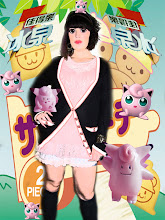Film Studies Assignment two.
Expressionist Style in the Film Noir.
By Kelly Cantrell.
(915 words)
Film noir is a term used to describe a style of film that was predominantly made in the 1940’s and 1950’s, with the last one being made in 1958. (A touch of Evil) there have been returns to film noir in the form of pastiche and neo noir.
Of course the word “noir” means black in French and the term was used to described films that were dark in nature, both visually and emotionally.
Themes of corruption, anger, jealousy, despair, violence and femme fatal signified strong elements of film noir and most of all film noir was concerned with it’s visual style and a strong emphasis on light and dark, shadows and high contrast between the two. Film noir was just as concerned with style as it was substance.
One of the key elements of film noir would be it’s expressionistic style, which was introduced to America by immigrant film directors from Europe who would keep their running costs down by sticking to night filming sessions, the stories were contemporary and did not require elaborate or over the top sets and props as did most Hollywood films at the time.
There are many films today that for me pay tribute to film noir of the 40’s and 50’s such as Frank Millers “Sin City” which too focus’s on strong contrasting arrangements between light and dark, dark themes of corruption and an underlying current of sleaze and filth in a grimy run down city, anti-heroes a plenty and hard boiled detective type voice over’s.
“The cat people” by Jaques Tourneur (1942) is a good example of film noir mixed with another genre, in this case, superstition or the ghost story.
The film is highly stylistic and the attention to detail within the shadows and lighting is very apparent when watching the film, for example, the camera angles draw your attention to the shadows cast by objects on several occasions and there is a very strong emphasis on silhouette and the contrast between light and dark. The music whilst not overbearing or invasive, is subtly creepy and a little un-nerving and works hand in hand with the visual style to evoke feelings of tension, mystery, betrayal and despair.
There are many key scenes in which the director uses simple lighting techniques to convey a sense of anti-naturalism in order to make the viewer feel even more unsettled at key moments, for example there is a scene in which Uraina, (our lead female character) has followed Alice to the local swimming pool, the film focus’s on the watery shadows cast on the walls by the pool for quite some time as Alice shrieks and splashes in the water, it’s almost as if the imagery of the shadows in this scene act to convey a living breathing entity that you can’t really see, so in this case the mystery of Uraina’s true identity.
This technique is used a lot throughout the film, and there is a strong sense of pattern and movement, over-lapping effects and even some animation is used to add to the otherworldly perception that we have of the lead actress.
Going back to music, there is yet another scene in which Uraina is following Alice after seeing her at a restaurant with her husband. There is no sound, only footsteps and the use of light and shadow are used to convey dread and fear, we do not see Uraina from this point on, only her feet do we see and then shadows and sounds, movement and suggestion to allow your imagination to fill in the blanks, again with this scene pattern and timing are used to great effect with the lamp-posts signifying the stopping and starting of the chase and adding to the overall suspense created within this scene.
The women in this film are also interesting in that the director has played with and twisted our perception of the usual set of conventions, for example, the wife in this case is the brunette shrouded in mystery rather than the blue eyed blonde that we may be familiar with from the western movie, and the seductress outside if the marriage is seen as a blonde instead of the expected sultry brunette.
But the director has played with our perceptions in that although the seductress is the blonde, the husband still identifies with her the most and almost see’s her as his significant other throughout the film and admits he is in love with her by the end and wishes for her to be his wife, so ultimately she still becomes the usual model for the typical wife figure. Uraina on the other hand may start out as the doting wife, but she is shrouded in mystery and is confused about her identity and mental state of mind, she is presented to us as both a femme fatal type character but also as a victim, she is portrayed as sad, lonely and lost.
The film ends on a rather tragic note, which reminded me of the western in the sense that the main protagonist never quite fit in where he/she was and ultimately returned to his/her former routine and finally found belonging despite the consequence of being alone and or dead.
The recurrent them of superstition vs science rears it’s head once again at the end to tell us that superstition won and that our heroine was not so crazy after all.


No comments:
Post a Comment